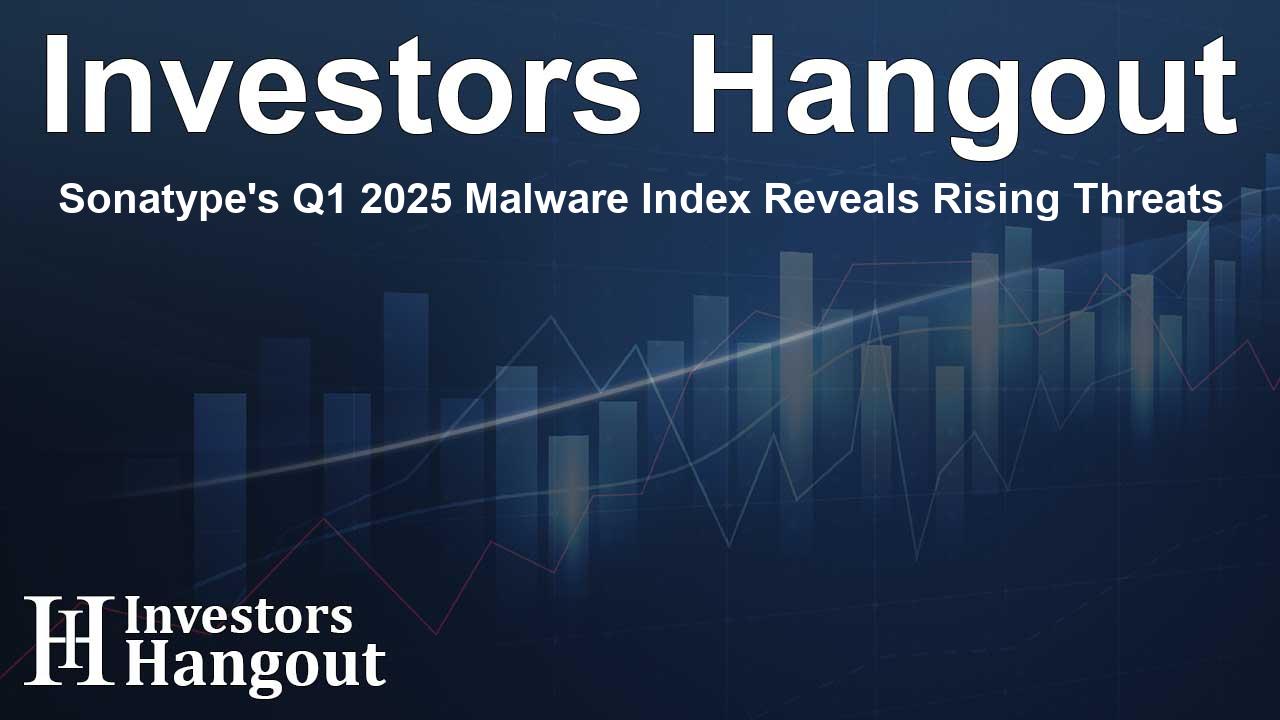Sonatype's Q1 2025 Malware Index Reveals Rising Threats

Emerging Trends in Open Source Malware
In recent reports, the landscape of open source malware has intensified, with more than 17,900 packages flagged in the latest index. As software supply chains become increasingly vital for organizations, understanding these trends becomes critical.
Shocking Rise in Data Exfiltration Malware
The data from this quarter has ushered an alarming trend, particularly with data exfiltration malware emerging as the primary concern. Remarkably, this type of malware has surged, comprising 56% of all detected threats, up significantly from 26% last quarter. As organizations continue to prioritize security, this drastic increase sheds light on an urgent need to bolster protective measures against such intrusive threats.
Impact on Businesses
The repercussions of compromised sensitive data can be crippling for any enterprise. Organizations must prioritize defending their systems, especially as data breaches can lead to severe financial and reputational damage. A proactive approach becomes essential as data integrity and security become paramount in the development environment.
Crypto Mining Threats Persist
Despite the focus on data protection, the presence of crypto-mining malware persists. Such malicious packages, designed to hijack computing resources for cryptocurrency mining, accounted for 7% of the total. This figure shows a significant rise compared to the previous quarter. Cybercriminals exploiting these open source platforms highlight a growing trend in resource hijacking.
Maintaining Vigilance
As attacks grow bolder, companies must adopt robust strategies to thwart potential breaches. Awareness and thorough investigation into these threats can empower organizations to establish effective barriers against future attacks.
Targeted Sectors Under Siege
The findings also reveal that financial institutions and governmental agencies are facing the brunt of these malicious activities. With over 20,000 attacks thwarted in Q1, 66% targeted financial firms and 14% aimed at government institutions. These statistics underline the urgency of reinforcing security measures across all sectors, especially those dealing with sensitive information.
Impact on Software Development
As software development continues to integrate open source components, the threat landscape becomes ever more complex. Organizations must implement rigorous screening processes to prevent malicious packages from infiltrating their environments.
The Need for Continuous Improvement
Data from the quarter suggests a shift in how ecosystem maintainers respond to these threats. With 80% of logged packages evolving to more sophisticated forms of malware, it’s clear that innovation among threat actors is on the rise. Businesses must adopt an agile approach, adapting security measures that evolve as quickly as the threats themselves.
Role of Security Solutions
Effective security solutions are vital for navigating this challenging environment. Companies should invest in systems that allow them to address vulnerabilities early in the software lifecycle. Utilizing advanced analytics and behavior monitoring can significantly enhance threat detection efforts.
Conclusion: Moving Forward
In conclusion, as open source software usage grows, revealing these alarming trends in open source malware becomes imperative. The insights provided through analyses like Sonatype's Notable Index for Q1 2025 serve as a wake-up call for organizations to embrace a more vigilant and proactive security posture.
Frequently Asked Questions
What is the significance of Sonatype's Open Source Malware Index?
Sonatype's index highlights crucial trends in malware threats, allowing organizations to understand and adapt their security strategies.
How has the trend of data exfiltration malware changed?
The data indicates a substantial rise, with data exfiltration malware accounting for 56% of threats in Q1 2025, a stark increase from past quarters.
What sectors are most affected by these malware attacks?
Financial institutions and government organizations are predominantly targeted, suggesting the need for enhanced security measures in these sectors.
What measures can organizations take to enhance security?
Implementing rigorous screening processes and investing in advanced security solutions can significantly reduce risks associated with open source malware.
Why is it important to monitor open source packages?
Monitoring is critical to prevent malicious packages from entering development environments and compromising sensitive data.
About The Author
Contact Logan Wright privately here. Or send an email with ATTN: Logan Wright as the subject to contact@investorshangout.com.
About Investors Hangout
Investors Hangout is a leading online stock forum for financial discussion and learning, offering a wide range of free tools and resources. It draws in traders of all levels, who exchange market knowledge, investigate trading tactics, and keep an eye on industry developments in real time. Featuring financial articles, stock message boards, quotes, charts, company profiles, and live news updates. Through cooperative learning and a wealth of informational resources, it helps users from novices creating their first portfolios to experts honing their techniques. Join Investors Hangout today: https://investorshangout.com/
The content of this article is based on factual, publicly available information and does not represent legal, financial, or investment advice. Investors Hangout does not offer financial advice, and the author is not a licensed financial advisor. Consult a qualified advisor before making any financial or investment decisions based on this article. This article should not be considered advice to purchase, sell, or hold any securities or other investments. If any of the material provided here is inaccurate, please contact us for corrections.
